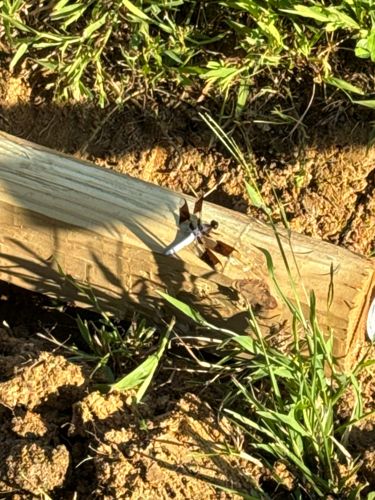Dragonfly (specifically, likely a Skimmer Dragonfly due to the wing coloration/pattern)
Scientific Name: As a specific species cannot be definitively identified from the image, a general example from the likely family is 'Libellula spp.' or 'Sympetrum spp.'
Order & Family: Order: Odonata, Family: Libellulidae (Skimmer Dragonflies - highly probable due to the broad wings and patterning)
Size: Depending on the species within the family Libellulidae, adult dragonflies typically range from 2 to 9 cm (0.8 to 3.5 inches) in body length, with wingspans ranging from 4 to 12 cm (1.5 to 4.7 inches).

Natural Habitat
Dragonflies are typically found near fresh water sources such as ponds, lakes, rivers, streams, and marshes, as their larvae (nymphs) are aquatic. Adults are often seen in open areas near water where they hunt for prey.
Diet & Feeding
Both adult and larval dragonflies are carnivorous predators. Adults primarily eat other flying insects, such as mosquitoes, flies, moths, and other smaller insects, which they catch in flight. Larvae feed on aquatic insects, tadpoles, and small fish.
Behavior Patterns
Dragonflies are predatory insects. Adults are strong fliers, often seen patrolling territories or hunting prey in flight. They perch frequently, typically with wings held out flat. Mating occurs in flight or while perched, and females lay eggs near or in water. Larvae (nymphs) are aquatic predators.
Risks & Benefits
Dragonflies pose no direct risk to humans; they do not sting or bite people. They are highly beneficial insects as natural predators of many pest insects, most notably mosquitoes, at both adult and larval stages. They are also indicators of healthy aquatic ecosystems.
Identified on: 8/29/2025